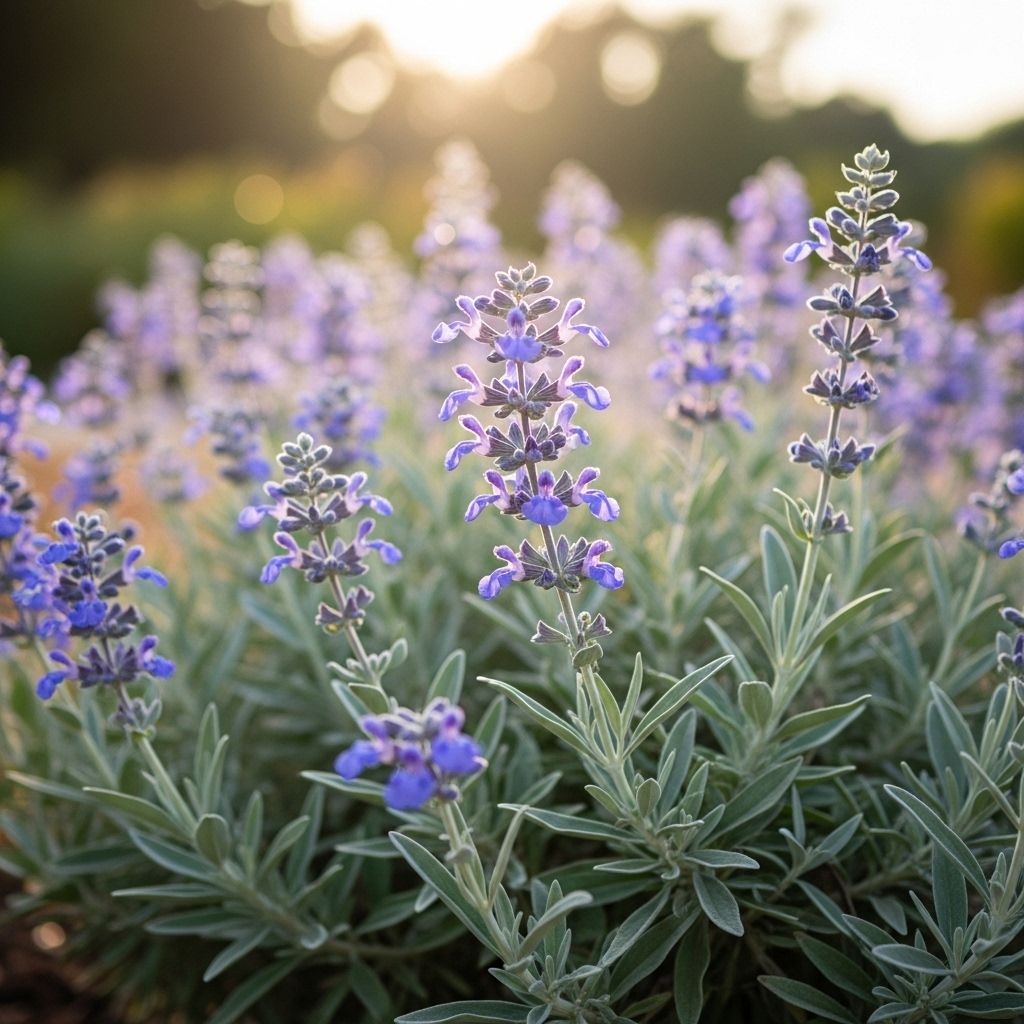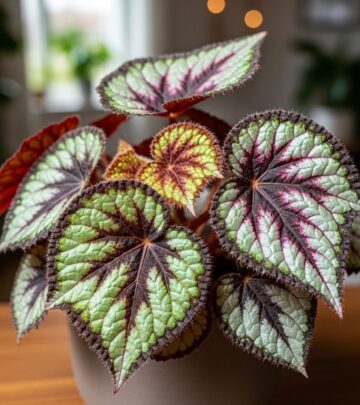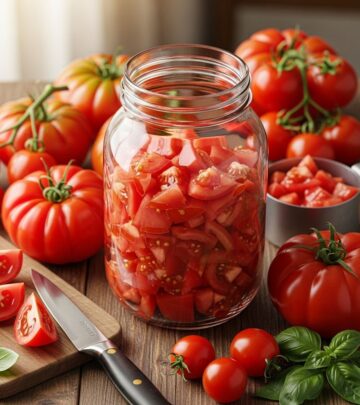Russian Sage Plant Care: Complete Guide For Lush Blooms
Discover the secrets to growing thriving, beautiful Russian sage in your garden, from selection and planting to care and design ideas.

Image: HearthJunction Design Team
Russian Sage: Plant Profile, Growing Guide, and Care Tips
Russian sage (Perovskia atriplicifolia) is a hardy and visually striking perennial, renowned for its silvery foliage, clouds of lavender-blue flowers, and ability to thrive with minimal care. Whether you are an experienced gardener or just starting out, Russian sage offers a drought-tolerant, long-blooming addition to your landscape, delivering months of color and textural interest. This guide provides a comprehensive overview of Russian sage, covering its botanical features, planting strategies, seasonal care, landscape uses, pruning, varieties, and more.
What Is Russian Sage?
Russian sage is an herbaceous, semi-woody perennial native to Central Asia. Its upright, square stems are adorned with finely divided, aromatic silvery-gray leaves, topped by tall, airy spikes of tiny purple-blue tubular flowers. Though often confused with true sages (Salvia) or lavender, Russian sage is actually a member of the mint family (Lamiaceae) and was named the Perennial Plant of the Year in 1995 by the Perennial Plant Association.
- Botanical Name: Perovskia atriplicifolia
- USDA Hardiness Zones: 4–9
- Height & Spread: Typically 2–4 feet tall and 2–3 feet wide
- Flowering Season: Mid-summer to autumn
- Flower Color: Purple-blue, often described as lavender-hued
- Foliage: Silvery-green, aromatic, finely divided, remains attractive through the growing season
- Growth Rate: Fast-growing once established
- Family: Lamiaceae (mint family)
Why Grow Russian Sage?
- Long Bloom Season: Flowers from mid-summer into fall, providing lasting color.
- Low Maintenance: Withstands drought and poor soils; needs little supplemental care.
- Disease Resistance: Rarely suffers from pests or disease problems.
- Wildlife Friendly: Attracts pollinators such as bees and butterflies.
- Versatile in Design: Excellent as a border, mass planting, accent, or in containers.
- Deer and Rabbit Resistant: The aromatic foliage deters browsing animals.
Russian Sage vs. Lavender and Salvia: A Quick Comparison
| Feature | Russian Sage | Lavender | Salvia |
|---|---|---|---|
| Botanical Name | Perovskia atriplicifolia | Lavandula spp. | Salvia spp. |
| Hardiness | Zones 4–9 | Zones 5–9 (most types) | Zones 4–9 (varies) |
| Foliage | Silvery, finely divided | Silvery, narrow | Varies; often green or gray-green |
| Flower Color | Purple-blue | Purple, blue, pink, white | Purple, blue, red, white |
| Growth Habit | Upright, airy | Compact, bushy | Varies by species |
| Drought Tolerance | Excellent | Excellent | Varies |
Plant Attributes and Seasonal Interest
- Stems: Upright, square, and silvery-gray, lending a subtle metallic sheen.
- Foliage: Softly textured, finely cut, and fragrant when brushed or crushed.
- Flowers: Tiny, tubular, and two-lipped, closely spaced along tall panicles for a luminous, misty effect.
- Sustained Appeal: After the summer blooms fade, the colorful calyces persist, extending visual interest well into autumn.
- Height & Spread: Most varieties grow 2–4 feet tall and 2–3 feet wide, forming bushy, upright clumps.
Where to Grow Russian Sage
Russian sage’s resilience makes it suitable for numerous garden settings:
- Full Sun: Requires at least 6–8 hours of direct sunlight for best bloom and growth.
- Poor or Rocky Soil: Flourishes in lean, well-drained soils and tolerates clay if drainage is adequate
- Alkaline Preference: Performs best in slightly alkaline soil (pH 7.0 or higher)
- Waterwise Gardens: Excellent for xeriscaping and dry-climate regions due to its drought tolerance.
- Border and Mass Planting: Useful in mixed beds, perennial borders, or large-scale sweeps for dramatic color and texture.
- Coastal and Urban Environments: Handles wind, heat, and urban pollution.
How to Plant Russian Sage
- Choose the Right Spot: Select a location with full sun and excellent drainage. Avoid rich, high-nutrient soils, which can cause flopping.
- Prepare the Soil: Loosen soil to a depth of 12–15 inches. Amend heavy or poorly drained soils with grit or sand. Avoid overly rich organic matter.
- Planting Depth and Spacing: Set plants so the crown is just above soil level. Allow for 2–3 feet between mature plants to ensure ample airflow and prevent crowding.
- Water In: After planting, water thoroughly to settle the soil and help roots establish.
- Mulch: Apply a thin layer of gravel or coarse mulch to retain moisture and suppress weeds, taking care not to bury the stems.
Growing and Care Tips
Soil and Water
- Soil Needs: Russian sage thrives in average to poor, well-draining soils. Avoid heavy clay or constantly soggy locations, which can cause root rot.
- Watering: Keep soil moderately moist while plants become established. Once mature, Russian sage is drought tolerant and prefers medium to dry conditions. Overwatering is a common cause of plant failure.
Fertilization
- Low Feeding Needs: Too much fertilizer encourages weak, floppy growth. Lightly mulch with compost each spring if desired, but otherwise avoid excess feeding.
Winter Care
- Hardiness: Suitable for zones 4–9. In colder areas (zone 4), apply winter mulch over the crown after the ground freezes for extra protection.
Pruning and Maintenance
- Annual Pruning: Each spring, cut back old stems to about 6–12 inches above the ground. This encourages bushier new growth and prevents legginess.
- Deadheading: Not necessary, but removing spent blooms can tidy the plant and encourage a fresh flush of flowers.
- Division: Plants can be divided every few years in spring if clumps become crowded or woody at the base.
Design Ideas and Companion Plants
Russian sage’s airy appearance and cool-toned blooms make it a flexible design element:
- Perennial Borders: Contrast its feathery texture with bold-leaved plants like rudbeckia, coneflowers, or daylilies.
- Mass Plantings: Plant in swathes for stunning blocks of color.
- Pollinator Gardens: Combine with bee balm, catmint, or echinacea for a pollinator-friendly display.
- Coastal or Mediterranean Scenes: Pair with lavender, rosemary, or ornamental grasses.
- Containers: Use dwarf varieties as the centerpiece for patio pots and balcony planters.
Popular Varieties and Cultivars
- ‘Little Spire’ – A compact cultivar (2 feet tall) ideal for containers or tighter spaces.
- ‘Blue Spire’ – Known for deep blue flowers and robust, upright habit.
- ‘Filigran’ – Finely cut foliage, airy stature, and strong stems.
- ‘Longin’ – Tall-growing (up to 4 feet), with thicker stems less prone to flopping.
- ‘Denim ‘n Lace’ – A Proven Winners selection with sturdy habit and rich, lacy flower spikes.
Common Problems and Troubleshooting
- Flopping: Stems may fall outward if planted in too-rich soil or excessive shade. Stake or cut back to encourage bushiness.
- Poor Bloom: Usually results from too little sun; relocate or prune nearby plants to improve light.
- Root Rot: Caused by soggy or heavy soils. Ensure good drainage and avoid overwatering.
- Pest Issues: Rare; deer and rabbits typically avoid Russian sage due to its scent.
Frequently Asked Questions (FAQs)
Q: Is Russian sage invasive?
A: Russian sage is not considered invasive in most gardens, though plants may spread by underground runners or self-seed modestly if not deadheaded. Regular maintenance keeps them tidy.
Q: How do I propagate Russian sage?
A: Propagation is easy by division in spring or from softwood cuttings taken early in the growing season.
Q: How often should I water Russian sage?
A: After the first growing season, water deeply only during severe droughts. Overwatering is much more harmful than under-watering.
Q: How do I prevent flopping or leggy growth?
A: Cut back plants by half in early summer if growth is already tall and floppy. Also, avoid excessive fertilizer and plant in full sun for best results.
Q: Can I grow Russian sage in containers?
A: Yes! Select dwarf types and use a high-quality, well-draining potting mix. Water when the top inch of soil feels dry, and place the container in full sun.
Summary: Why Choose Russian Sage?
- Provides months of color and texture with little care
- Adapts to tough soils and waterwise landscapes
- Attracts pollinators and deters browsing animals
- Versatile in borders, mass plantings, or containers
- Resistant to most pests and diseases
With its resilience, elegant beauty, and ease of care, Russian sage is truly a standout perennial for nearly any garden. Select the right spot, follow simple planting and maintenance tips, and enjoy a spectacular, no-fuss display year after year.
References
- https://hort.extension.wisc.edu/articles/russian-sage-perovskia-atriplicifolia/
- https://www.arborvalleynursery.com/plants/russian-sage
- https://www.americanmeadows.com/content/perennials/russian-sage/all-about-russian-sage
- https://pbndesign.com/plant-type/russian-sage/
- https://www.provenwinners.com/learn/how-plant/russian-sage
Read full bio of Shinta












